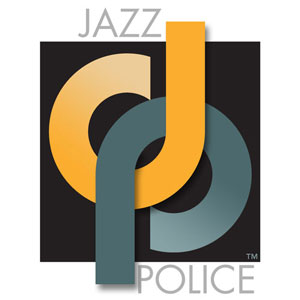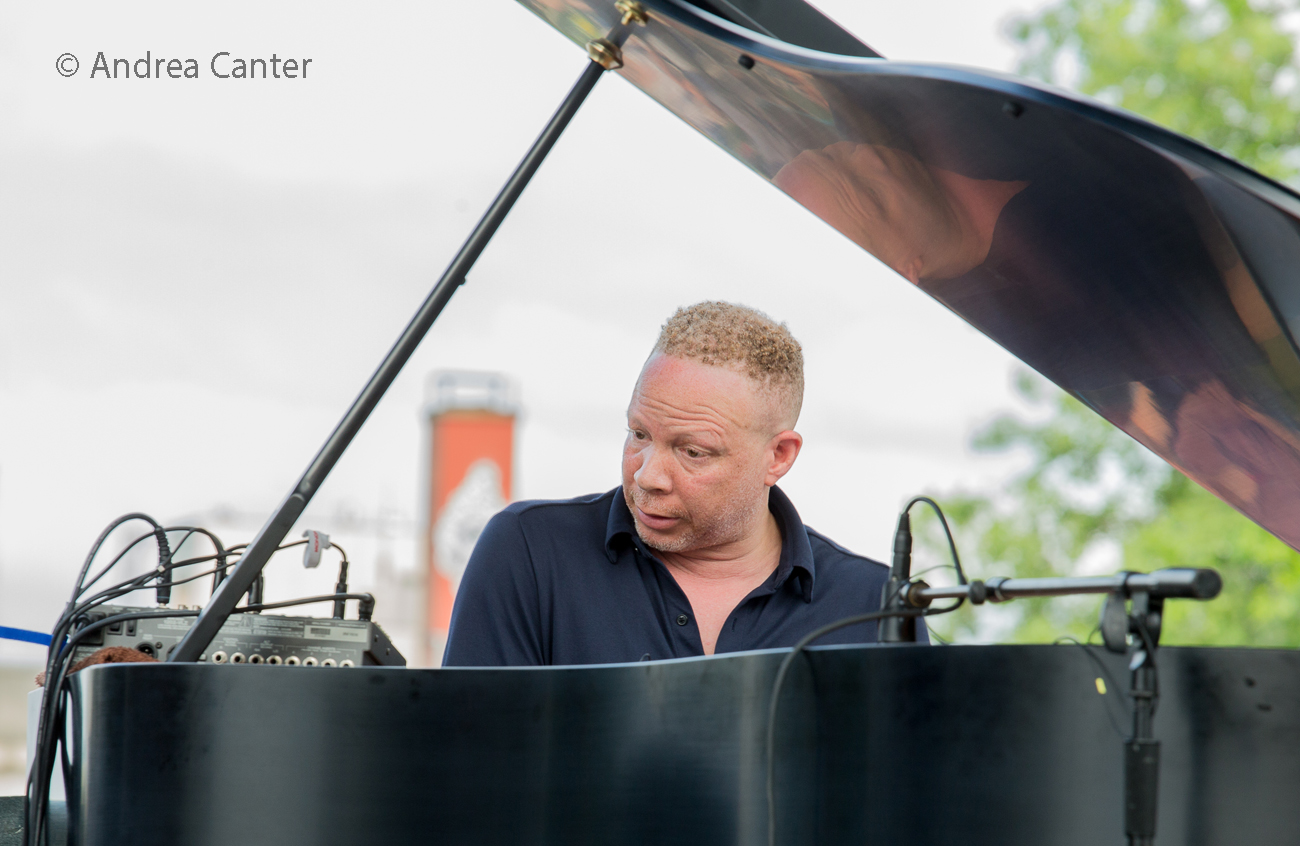
On October 8, the John D. and Catherine MacArthur Foundation announced the recipients of the 2025 awards known as the “Genius Grants,” unrestricted fellowships of $800,000 paid over five years to “exceptionally creative people with a record of significant accomplishments and the potential for continued achievement.” Since 1981, the MacArthur has been given to 1,153 people. Grantees typically include a broad spectrum of scientists, artists, and writers—and sometimes jazz musicians. You can’t apply for a MacArthur—there’s a process for submitting and reviewing nominations. The 2025 recipients were notified only a few days ahead of the official announcement. Keyboardist, composer, and bandleader Craig Taborn, a native of Golden Valley, MN based in New York, is among the 22 Fellows for 2025.
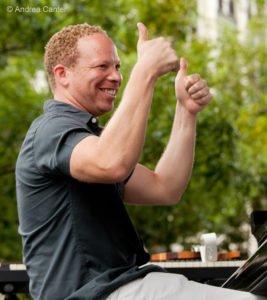
I have written about and interviewed Taborn a number of times for Jazz Police over the past 20 years, and while it would be timely (and very interesting) to interview him now, I will save that for another time after the MacArthur dust settles. For this “celebration” of a true genius, I have assembled parts of past articles that provide an historical context for the talent and accomplishments leading to the MacArthur… and whatever comes next.
Craig Taborn: Brief Bio
Pianist/Fender Rhodes master Craig Taborn grew up in Golden Valley, MN, where he frequently jammed with future Bad Plus icons Reid Anderson and David King. He first attracted attention as a student at the University of Michigan, and by the mid-90s was holding the piano chair for Detroit sax sensation James Carter. His compositions and chops pushed beyond mainstream and he became a regular collaborator with such innovative musicians as Roscoe Mitchell, Susie Ibarra, Dave Douglas, Chris Potter, Steve Coleman, David Binney, Gerald Cleaver, Drew Gress, Dave Holland, David Torn, Nicole Mitchell, Tomeka Reid, Mary Halvorsen, Tim Berne, Vijay Iyer, Ches Smith, Dave King, Reid Anderson, and Kris Davis.
Taborn’s recordings (as leader/co-leader) include his self-titled debut (DIW), Light Made Lighter (Thirsty Ear), the highly acclaimed Junk Magic (Thirsty Ear), and his remarkable first solo effort, Avenging Angel (ECM), which hit many “best of 2011” lists. More recent releases include Chants (trio, ECM), Daylight Ghosts (quartet, ECM), and Shadow Plays (live, improvised solo, ECM), as well as The Transitory Poems with Vijay Iyer (ECM), Octopus with Kris Davis (Pyroclastic Records), Golden Valley Is Now with Reid Anderson and Dave King (Intakt), and the new Trio of Bloom with Nels Cline and Marcus Gilmore (Pyroclastic Records).
Noted the Boston Phoenix, “Taborn doesn’t simply transfer acoustic piano ideas to the Rhodes — he thinks orchestrally, in terms of timbres, and makes effective use of the instrument’s special sound, especially its ‘sub-bass’ effects.” Adds Tim Berne, “It doesn’t really matter what he plays. I think he’s one of the most incredible musicians alive.”
Craig Taborn With Tom Harrell at the AQ on Jackson Street
I recall the first time a bolt of lightning struck while I was listening to the Golden Valley native. It was maybe the late 90s, at the “old” Artists Quarter on Jackson Street, where Craig was sideman for trumpeter Tom Harrell’s ensemble, playing acoustic piano. A long-time fan of mainstream jazz piano, I suddenly felt (and repressed) an urge to jump up and scream, “How did you do that?” Craig, even 25 years ago, coaxed music from the keyboard unlike any I had heard—or imagined—before. No electronics, not even the inside-the-piano antics that he sometimes employs today. This may say as much about my 1990s naiveté re modern piano as about Craig’s talent. But for my ears, it was a transformative experience and one that raised the bar for any improvised music that I’ve heard since.
What I witnessed that night on Jackson Street was an artist who understood the potential of his instrument and was determined to explore and expand that potential from all conceivable (and maybe, inconceivable) directions. Not just via masterful technique, which was a given, but Craig truly enlisted the piano as co-conspirator, particularly exploiting its extreme dynamic and aesthetic range, its potential for carrying on multi-level conversations.
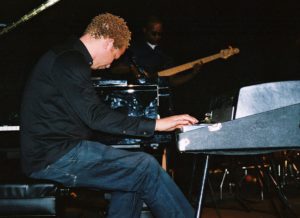
“Garcia” at the Artists Quarter, December 2003 (Jazz Police, April 2004)
[The night at the Artists Quarter–now in the Hamm Building–was billed as a trio featuring Dean Granros (guitar), Anthony Cox (bass), and Dave King (drums). Then Granros couldn’t make it, but Craig Taborn was in town visiting family, and soon this one-off trio, dubbed “Garcia”, took the stage. I wrote a review “for fun” and shared it with Craig, who said I needed to create a blog and publish such reviews. I didn’t start a blog but a few months later, Don Berryman launched Jazz Police.Com and was looking for material. This was only the second time I heard Craig live. Here is an excerpt from that review.]
Craig Taborn? He plucks, he slides, he pounds, he strokes, he runs up and down, he hypnotizes… sometimes using two keyboards in unison or seemingly cloning himself into two distinct voices simultaneously. He hints at what he could do if driven by more mundane inspiration, but his muse is more cosmic…
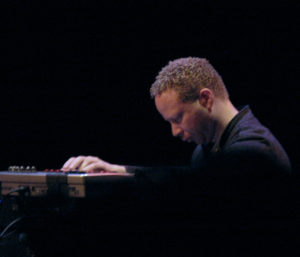
2010, Interview (Jazz Police.com)
[From a 2010 interview prior to Craig’s show at the Walker Art Center, re the growth of jazz audiences]
[European] audiences have typically been more receptive to free improvisation and the more adventurous of American jazz artists. But Taborn sees audiences growing despite the economic downturn. “I think the audiences are growing as the budgets for presenting the music are shrinking because of the financial crisis. It is an interesting state of affairs as there are perhaps fewer well-paying gigs in some places but a lot more (younger) audience members. And all of this is happening at about the same time that the big money CD industry has effectively evaporated, so album sales are anemic. But of course all of that could be related. The audience might be growing because there is more liberal distribution in the open marketplace of the Internet. It is certainly much easier to seek out, discover, and listen to whatever one wants without any monopolizing of the market by larger record labels. You can now get a hold of this stuff wherever you may live and listen immediately. You don’t have to live in a big city or college town anymore. Now a kid up in the Iron Range can download the Junk Magic recording as easily as someone in Minneapolis or New York. They don’t have to drive several hours just to see if it is available in a store.”
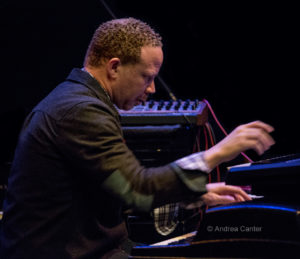
2013, Interview prior to “Heroic Frenzies– three performances at the Walker Art Center (solo acoustic piano, Junk Magic, and Craig Taborn Trio (Jazz Police.com)
Regarding the new trio album, Chants, are all compositions specifically written for this trio? How do the unique talents of [Thomas] Morgan and [Gerald] Cleaver impact how you write (and how you play)?
Not all of the compositions were written initially for the trio, but they were all developed in the performance context and have become the trio book. With Gerald and Thomas, I am freed from the task of defining the aesthetic terrain of a piece because I trust both of their sensibilities in rendering the music. This has an effect on my writing because I try to offer information that is multi-valent enough to allow for many different interpretations. I am less concerned with fixing the elements as centering them enough so that their encircling possibilities are clearly accessible for the group. Similarly, in playing I try to dictate as little as possible so there’s very little discussion or control. I defer to the moment and individual decisions, and work from there. Basically I am trying to allow the moment to unfold in the perfect way it can if nobody tries to force it in a specific direction. The trio is about listening and responding.
Do you go through a different process, different steps, when you compose for the Trio vs Junk Magic vs solo? How much do you lay out ahead, relative to what develops spontaneously on stage (or in the studio)? Have you taken solo spontaneous improvisations and reworked them as ensemble compositions?
Well I think that the solo in a certain sense is illustrative of the basis of my compositional approach. While fully improvised, it is an example of how I work in a purely compositional sense. With Junk Magic and with the Trio, the question becomes how to integrate that process into more pre-set structures that engage the context and do not hinder it. In the case of Junk Magic, the question is how to create electronic elements that realize the deeper aspects of what that process can offer, but also marry well with live improvisers. Another question is how to integrate the improvisations and the electronics with my own compositional ideas. Junk Magic is basically a project to explore these ideas. There is no one process — there are many, and each piece is an investigation of a different approach. Similarly, the Trio is an attempt to allow for the dismantling of certain rigorous compositional structures. So the process there is to create pieces, many of which have a certain complexity of design, and have the musicians work with those elements in their way to see what can be built. In many ways, the solo and trio are approaching music from two different sides: The solo is building from scratch in real time, and the Trio is rebuilding or repurposing in real time.
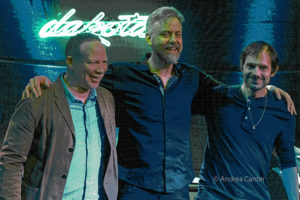
How have evolutions in digital technology impacted your approach to playing and composing for electronic keyboards?
Digital technology has allowed for the creation of many “facsimilic” electronic instruments and effects. In other words, it is possible to create an emulation of electronic instruments and sound processors from the past and reimagine them, mix and match, etc. So now more than ever it is theoretically possible to create an ever-widening variety of instruments and structures to use in the improvisations. But with this freedom, one loses the very creatively vivifying element of limitation. It is often what one is forced to work around that engenders creative ingenuity. So I find my approach these days is finding ways to create randomness and uncertainty, and ensure limitation in order to ensure my creative mind is engaged, rather than the controlling mind.
It’s sometimes hard to remember your (relatively) straight-ahead days with James Carter. Do you ever miss that approach? How does that personal history inform what you are doing now?
All of the jazz experiences are always a part of what I am doing. The result is largely illusory in relation to the process that is engendering it. So in many instances, the Trio, for instance, is approaching things in a very traditional way. But by virtue of what we are approaching or else by the fact of the multiplicity of approaches going on at one time or from moment to moment, it may sound more or less related to earlier ways of playing jazz. So I don’t really miss the approach because it is always a part of what I am playing.
2013, Review of Heroic Frenzies (triple header) at The Walker (2013, Jazz Police.Com)
It took nearly two decades for Craig Taborn to return to his home town in total control of the music, with a night at the Walker Art Center’s McGuire Theater (April 26th) that, yet again, left my ears tingling, my brain wondering, “how did you do that?” Yes, with three configurations (solo acoustic piano, mostly acoustic trio, and heavily electrified Junk Magic quintet), I could see as well as hear partial answers to that question—the controlled placement of separate sounds, the opening of wide spaces, the patient construction of rising and falling tempos and dynamics, the joyful outbursts of tight arpeggios and elongated runs, the braided interplay among bandmates, the interaction of man and digital machine.
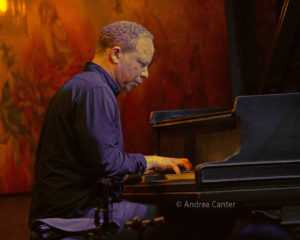
But Taborn seemingly summons sound and emotion that cannot be overtly traced to what we see and hear, or what can be invented via laptop and synth; rather, those sources merely translate his vision of what can be pulled from his keyboards. And while he explores that vision somewhat differently from solo to acoustic trio to electronic ensemble, there are constants, the core of the artist: Each note, each sound, each space has a purpose, and sometimes that purpose is not immediately apparent; delicate touch and aggressive attitude can effectively co-exist; physical dexterity always serves, never trumps, artistic intent; every musician on stage matters, at all times; the piano (or electric keyboard)—and the pianist– can yield unlimited sounds and ideas. With Taborn, these givens exist in a swirl of elegant elasticity – sounds and moods swell and recede, sometimes in delicate slow motion, sometimes in sudden, ferocious fury.
Taborn’s night at the Walker started off solo, at first a slow “chant” evolving into a heady etude with long decays. As if a backdrop to a dark storyline, soft and slow became more frenzied and complex, suggesting a meeting between Cecil Taylor and Debussy. And there was that co-existence of delicacy and aggression. Moving over to engage the laptop and electronic keyboards, Taborn seamlessly transitioned from solo to Junk Magic, his cohorts quickly assembling on stage for a 35-minute sound menagerie melding acoustic and electronic tactics. Each of these musicians – Chris Speed (tenor sax), Mat Manieri (viola), Erik Fratzke (electric bass) and Dave King (drums)—has proven himself in the realm of free and collaborative improvisation, although as an ensemble, Junk Magic has been off the grid for a few years. Time off has not suppressed the telepathy of their interaction, and perhaps only enhanced the spontaneity of their adventure. Each musician led, followed and danced in a jagged and twisted fusion of sonic lines and starbursts. Full electronic throttle is not my personal preference but, when presented with such collective imagination, it’s energizing, and ultimately musical.
After intermission, Taborn skipped another solo round and launched the final set with bassist Thomas Morgan and drummer Gerald Cleaver, the 8-year-old acoustic trio that released its first recording earlier in the week. The aptly named Chants may have served as a starting point for the live set, but hardly confined it. Vamping phrases from both piano and bass often provided a unifying thread, and throughout the set, sudden changes in dynamics and tempo provided propulsion as well as emotional ebb and flow. Cleaver plays as delicately and as powerfully as any percussionist, and at one point we could literally see steam rising from the trapset.
One composition led into another, Taborn taking a solo turn, laying thick layers of sound as if a frantic choro, Morgan adding melodic figures that stimulated more trio commentary. Although the overall form suggested the final track of Chants (“Speak the Name”), the recorded work slowly winds down to a single heartbeat, while this live interaction moved in the opposite direction as an increasingly loud, dense, “heroic frenzy.” An encore, Sun Ra’s “Love in Outer Space” was the most melodic of the evening, even swinging in the broadest sense of the term, with the trio darting from filigree to molasses, from outer space to internal combustion.
“Basically I am trying to allow the moment to unfold in the perfect way…,” Taborn noted in an interview a few days before the Walker concert. And indeed, the evening unfolded perfectly, from one moment, one configuration, to the next. And I’m still wondering, “How did he do that?”
